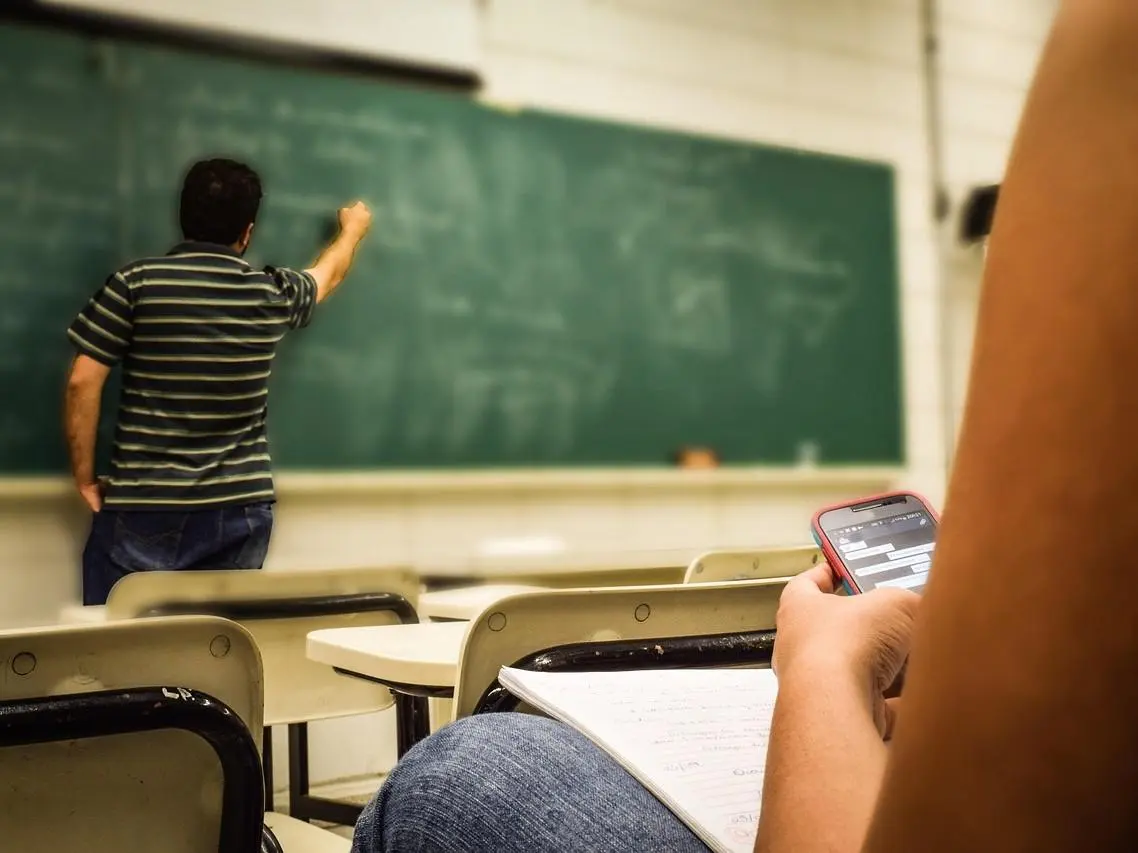We shouldn't ban smartphones in the classroom for older teens, new research reveals

A new study challenges the belief that banning smartphones in classrooms improves older teenagers’ academic attainment.
Instead, it shows that when teachers actively integrate smartphones into lessons, they can enhance learning and narrow academic gaps.
The research, just published in Information Systems Research, suggests that the best classroom policy is to allow smartphones, but to guide students’ use explicitly for learning purposes.
The research, co-authored by Dr Aaron Cheng, Assistant Professor in the Department of Management at the London School of Economics and Political Science (LSE), Dr Zhe Deng, an Assistant Professor at Saint Joseph’s University in Philadelphia, Professor Pedro Ferreira, from Carnegie Mellon University in Pittsburgh, and Professor Paul A. Pavlou, from the University of Miami, drew on a series of randomised controlled trials with more than 1,000 students aged 14 to 23 at a Chinese vocational school.
The students were randomly assigned to one of three conditions: smartphones banned in their classroom, smartphones allowed in their classroom without guidance, or smartphones allowed in their classroom, but under teacher direction.
The researchers found the teenagers spent on average nine minutes on their smartphones during a 90-minute lesson, regardless of whether smartphones were allowed or not.
When students used their smartphones without guidance from their teachers, they spent only around 36 seconds on learning-related activities and approximately eight minutes on distractions. But when they were asked by their teachers to use their phones constructively for learning, they spent nearly four minutes on learning-related activities and about 5.5 minutes on distractions. Overall, when teachers allowed the use of smartphones, but in a focused, guided way, it significantly helped older teens to learn and outweighed the time they spent distracted by the devices.
The payoff was greatest for previously lower-performing students. Lower-performing students saw a performance gain of 2.87 times the average gain of all students, compared to when smartphones were banned.. This result suggests that if managed well, technology in classrooms does not widen educational inequality; it can help close it.
Dr Aaron Cheng, co-author of the research, said: "These findings highlight a critical point: banning smartphones for older students is neither practical nor beneficial. Students will reach for their phones anyway; structured, teacher-guided use can turn that impulse from distraction into productive learning. The debate should not be about banning smartphones, but about how to weave them into lessons to maximise learning. With the right guidance and tools, smartphones can become powerful learning aids, rather than distractions.
"Most existing research has not tracked students’ distraction and learning. By contrast, we analysed video feeds during our experiments to measure how long each student engaged with learning and how long they were distracted for, both on and off their smartphones. This showed that the time students spent distracted versus the time they spent learning was almost identical across all experimental conditions – a pattern that, by itself, did not predict the performance gain.
"The real focus should be on training teachers to integrate smartphones into lessons effectively. With the right strategies, smartphones can become powerful educational tools, helping all students – especially those who need it most – to reach their potential."
The research is called From Smartphones to Smart Students: Learning vs. Distraction Using Smartphones in the Classroom and can be found here: https://pubsonline.informs.org/doi/full/10.1287/isre.2022.0078